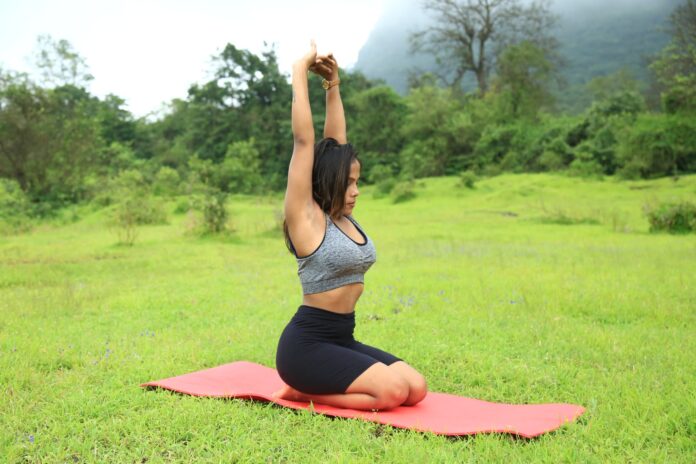
People are more anxious than ever these days. Some are turning to substances like drugs and alcohol or junk food for comfort and relief. For those looking for healthier ways to cope, one very effective tool for relieving anxiety is yoga.
As a yoga instructor, I’ve seen these therapeutic benefits firsthand. My clients are primarily first responders and military personnel. Many of them have post-traumatic stress disorder (PTSD) or other more severe anxiety issues. (Learn about how treatments for PTSD are helping first responders in the program “Shatterproof” at FHE Health.)
Thanks to an approach known as “Yoga for First Responders® (YFFR),” we’re able to tailor traditional yoga to meet the unique treatment needs of this population. First responders are then able to process the unique, on-the-job stressors that they face, while also building their mental, physical, and emotional resilience to stress. This yoga-led, healing process involves training the mind, nervous system, and physical body to work together and return to a state of alignment. Motherhood Community has yoga-related articles that may help you relieve anxiety.
How Yoga Therapeutically Addresses the Roots of Anxiety
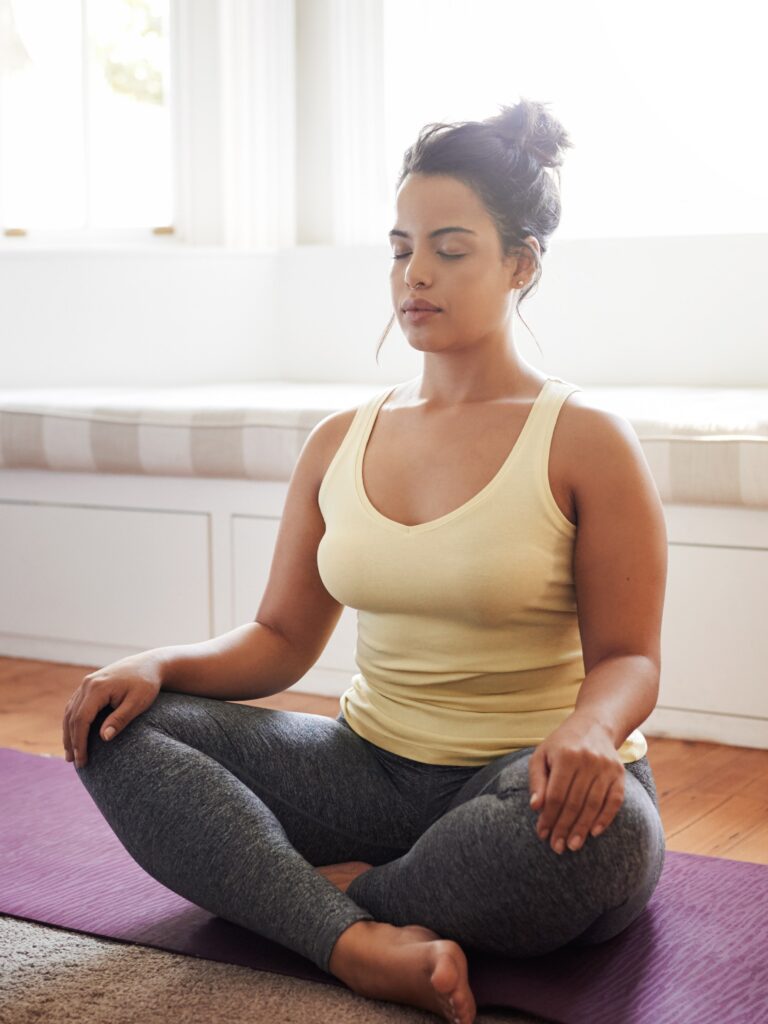
In the next section, I’ll recommend several yoga techniques that I regularly use with first responder clients to relieve anxiety symptoms. It’s worth noting at the outset, however, that these anti-anxiety benefits of yoga are more like positive byproducts of the practice rather than its core intention.
A common but somewhat misguided tendency is to associate yoga with stretching or relaxing. The real, original intention of yoga is to quiet the mind and gain optimal functioning of the psychophysiological (mind-body) system. In this sense, yoga is not just another good “habit,” like making healthy eating choices or exercising. (If it were, many people—first responders included—wouldn’t need yoga, because they’d already be eating well and staying fit.)
What’s different about yoga is that it teaches people how to regulate their nervous system. This skill is one that most first responders, like the population at large, haven’t acquired until they come through the YFFR program. Yet learning how to better regulate one’s nervous system is what it means to therapeutically address the roots of anxiety, not just its symptoms.
More Neurobiological Benefits of Yoga for Treating Anxiety
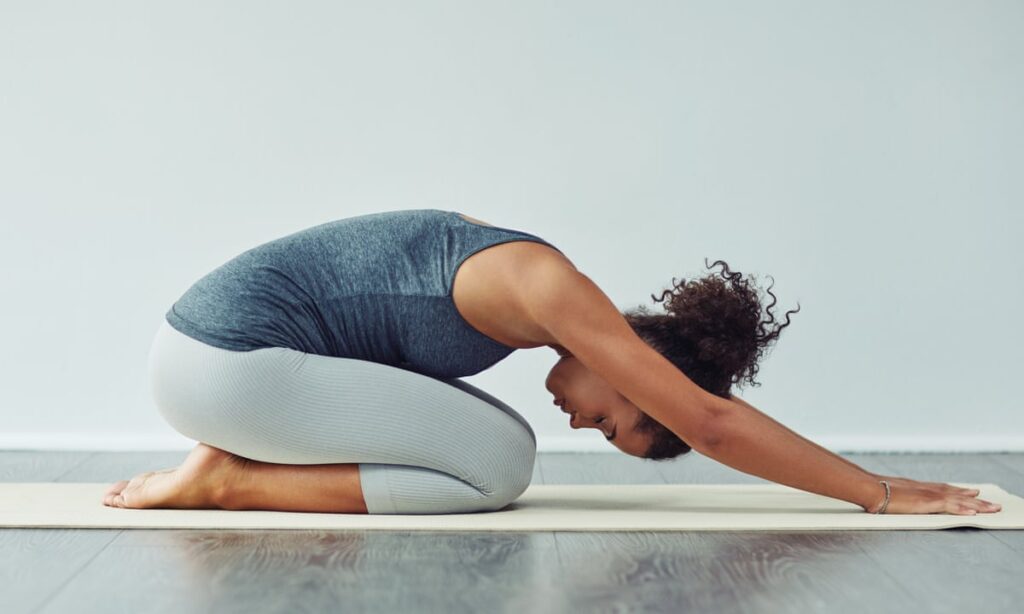
There are plenty of physical benefits of yoga. Actually, though, these take a close second to the mental and neurological incentives to practice yoga.
The mind is a powerful tool. Period. Without the proper training, and at high levels of stress, we can fall victim to it. Wherever the mind goes, the nervous system follows, and the physical body reflects whatever the mind and nervous system are experiencing.
Yoga goes biologically deeper than stretching or relaxing, because it involves and integrates both mind and body, each of which expresses stress-related symptoms differently. Those who consistently practice yoga can advance their ability to make self-directed biological changes that may positively impact the functioning of their brain and nervous system.
Yoga is thus an excellent tool for anyone, not just those suffering from anxiety and stress-related disorders. Calming down the body and nervous system is just not something we are taught to do, but it’s as important as showering, brushing/flossing your teeth, and other good hygiene habits.
4 Yoga Techniques for When You’re Feeling Anxious
On that note, here are some techniques to try when you’re feeling anxious and need some relief:
1. Three-Part Breath
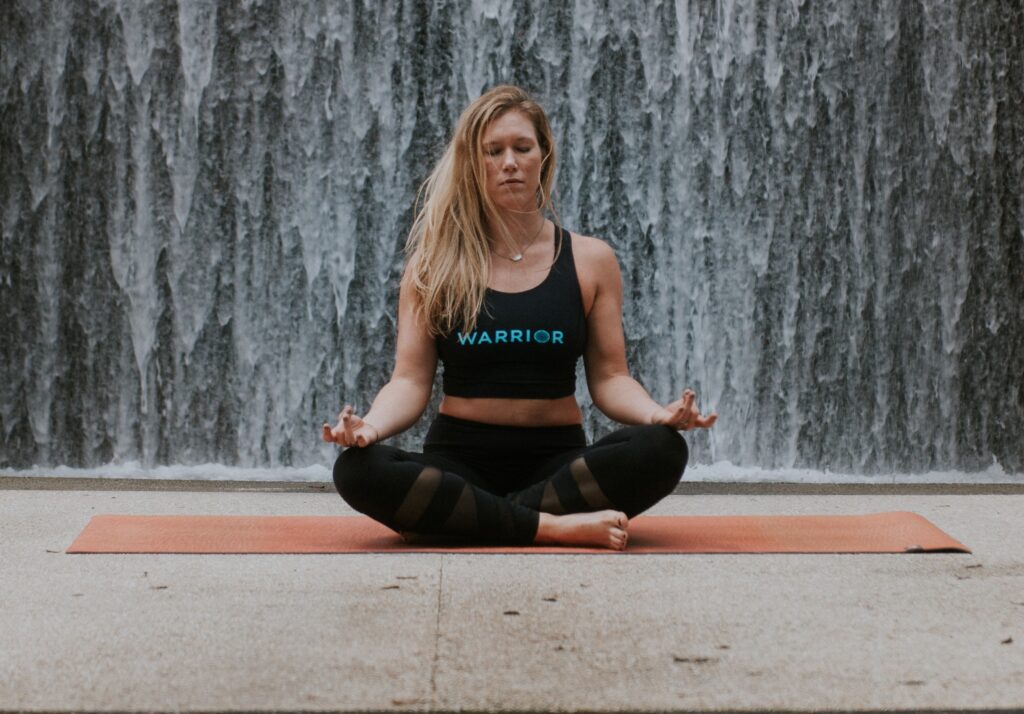
Before any posture, breathwork is by far the most vital ingredient when practicing yoga— especially for those in an anxious state or who suffer from PTSD- related anxiety. Breathwork can easily be overlooked, however, because there can be so much focus on physical postures.
“Three-Part Breath” is the foundational breathwork technique taught in every YFFR class. If a client is in an anxious state, practicing breathwork will give them direct access to their nervous system. With consistent practice, it can impart an ability to self-regulate. Three tips for hitting the calm button: 1. Breath through the nose 2. Breath deep into the belly 3. Extend the exhale longer than your inhale.
TO DO: The three-part breath can be done while seated comfortably, standing, or even lying down. Take the hands to the lower belly and inhale deeply through the nose. Allow the breath to go deep into the lower belly, inflating it like a balloon and then exhale as the belly deflates. Keep the hands on the low belly so you can see and feel this happening. Repeat the same process 5-10 times.
Next, keep one hand on the lower belly and take the other hand to the ribcage. Now inhale deep into the belly and then continue the inhale to allow the rib cage to expand. Repeat the same process 5-10 times.
Last, keep one hand on the lower belly and rest the other hand on the chest. Inhale deep into the belly, expand the ribcage, and now extend the inhale into the chest cavity until you feel your hand rise. The exhale will deflate the chest, then ribcage, then belly. It can help to count to three on the inhale and five on the exhale, until it becomes routine. Repeat this process 3-5 minutes.
2. Cat/Cow

Viva Las Vagus! The vagus nerve is the longest of the 12 cranial nerves in our body. It extends from the brain stem down to the abdomen, connects through many major organs (heart, liver, spleen, etc), and directly affects the parasympathetic nervous system, which is responsible for the body’s rest response.
The Cat/Cow pose increases blood flow to the vagus nerve, which helps stimulate the Rest/Digest response. The result is a stronger brain to body connection, as well as increased blood flow through all of the major organs connected by the vagus nerve. In this way, the body learns how to relax, regulate, and remain in a restful state, which can be a big help to those who suffer from anxiety and other stress-related disorders.
The Cat pose also relieves lower back and neck tension, while the Cow pose will open the hips and abdomen.
TO DO: Come to a “Table Top” position, in which the shoulders are stacked over the elbows and wrists and the knees are directly underneath the hips. Come to the finger pads to reduce any pressure on the wrists. On the exhale, arch the spine like a cat drawing your chin closer to the chest. On the inhale, drop the belly while lifting the collarbones and tailbone, and pulling your shoulders down and back. Continue with slow inhales and exhales while matching breath with movement. Repeat 5-10 times.
3. Chair
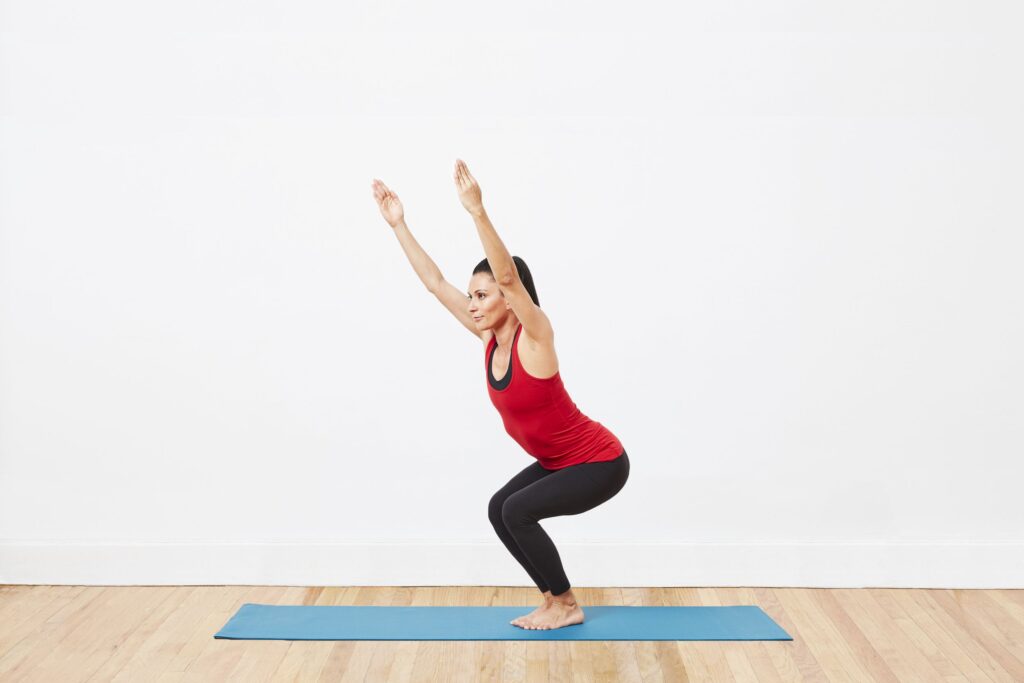
This pose is one of the quickest ways to build heat in the body, because it activates so many parts of the body (arms, quadriceps, ankles, glutes). But the Chair pose also stimulates the diaphragm region of the body (the heart and circulatory and digestive systems). As an activating pose, Chair is an excellent opportunity to simultaneously practice the Three-Part Breath or another focused breathing technique, to improve focus, willpower, and mindfulness.
For those who are feeling anxious, this exercise can really be beneficial, by teaching them how to find a single point of focus in times of stress. It can be very empowering to learn how to activate the body while focusing and controlling the breath. This skill is easily transferable: Once it has been practiced in a safe way on the yoga mat, it can be used off the mat to self-soothe in high-stress situations.
TO DO: Start in a standing position. Stand with your feet positioned at either the width of your hips or feet together. Take a deep belly breath in, and on the exhale bend your knees and send your hips back, as if sitting in a chair. Inhale the arms up, fingers bladed wide with biceps framing ears—(a gentle modification would be elbows bent in an outside 90-degree formation)—while relaxing the shoulders back and down. Tuck the tailbone under while engaging the core. Complete several rounds of Three-Part Breath and then release into a standing position.
4. Cognitive Declarations/Mental Reframing

Most people have an internal dialogue that is highly unproductive or negative (i.e. “I am not flexible,” “I can’t do this,” etc..) In yoga sessions, I try to offer opportunities to replace these unhelpful, sometimes self-destructive scripts. During a challenging pose, the cognitive declaration might be “I am calm,” or “I am in control.” During a resting position: “I deserve this break.”
Powerful mental messaging is an important piece of regaining composure, staying calm, and ensuring the mind and the nervous system stay in alignment with the body. Over time and with practice, clients often begin to notice when their mind goes to the negative and are better equipped to reframe situations that are causing them anxiety.
Yoga is a practice that over time helps people develop, train, and regulate their nervous system. Most beginners feel immediate benefits. The more consistently a person returns to the mat, the more benefits they’ll reap— and the more long-lasting those benefits will be. When practiced with the true intention of quieting the mind and optimizing the function of the psychophysiological system, yoga is one of the best forms of self-help for anxiety.
This article was provided by Samantha Wines, who is with the non-profit organization Yoga for First Responders® and a yoga instructor in FHE Health’s treatment program for first responders.














